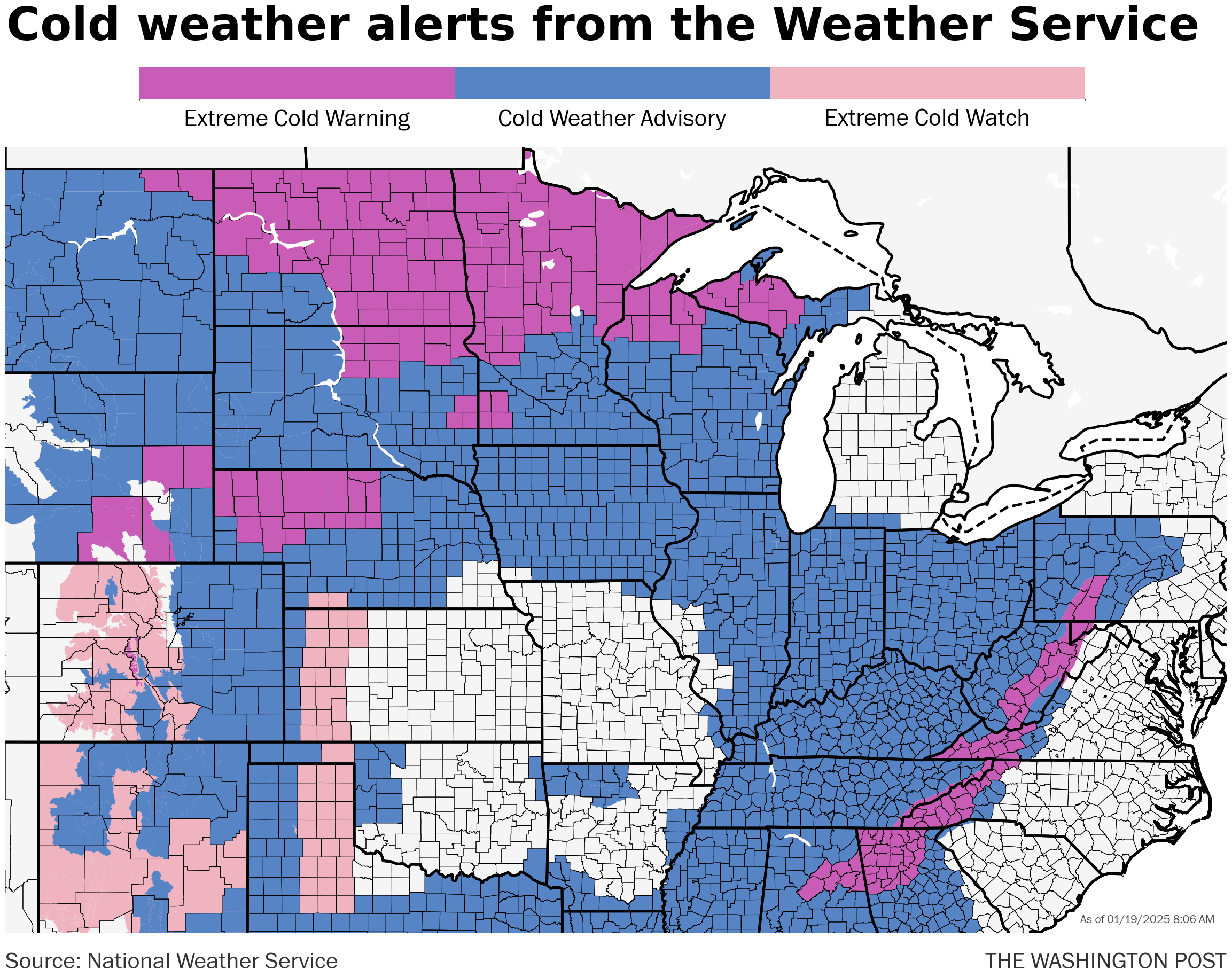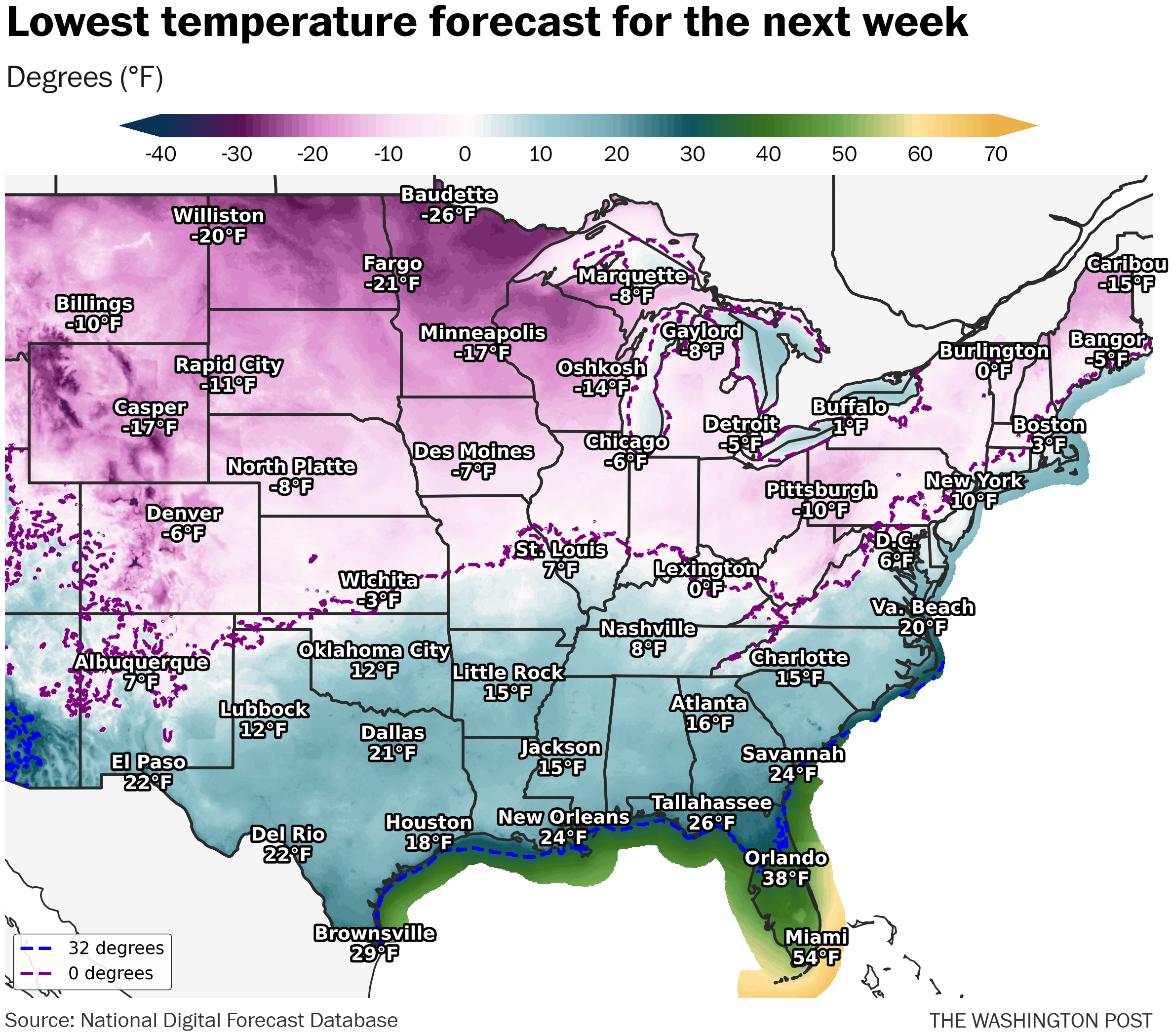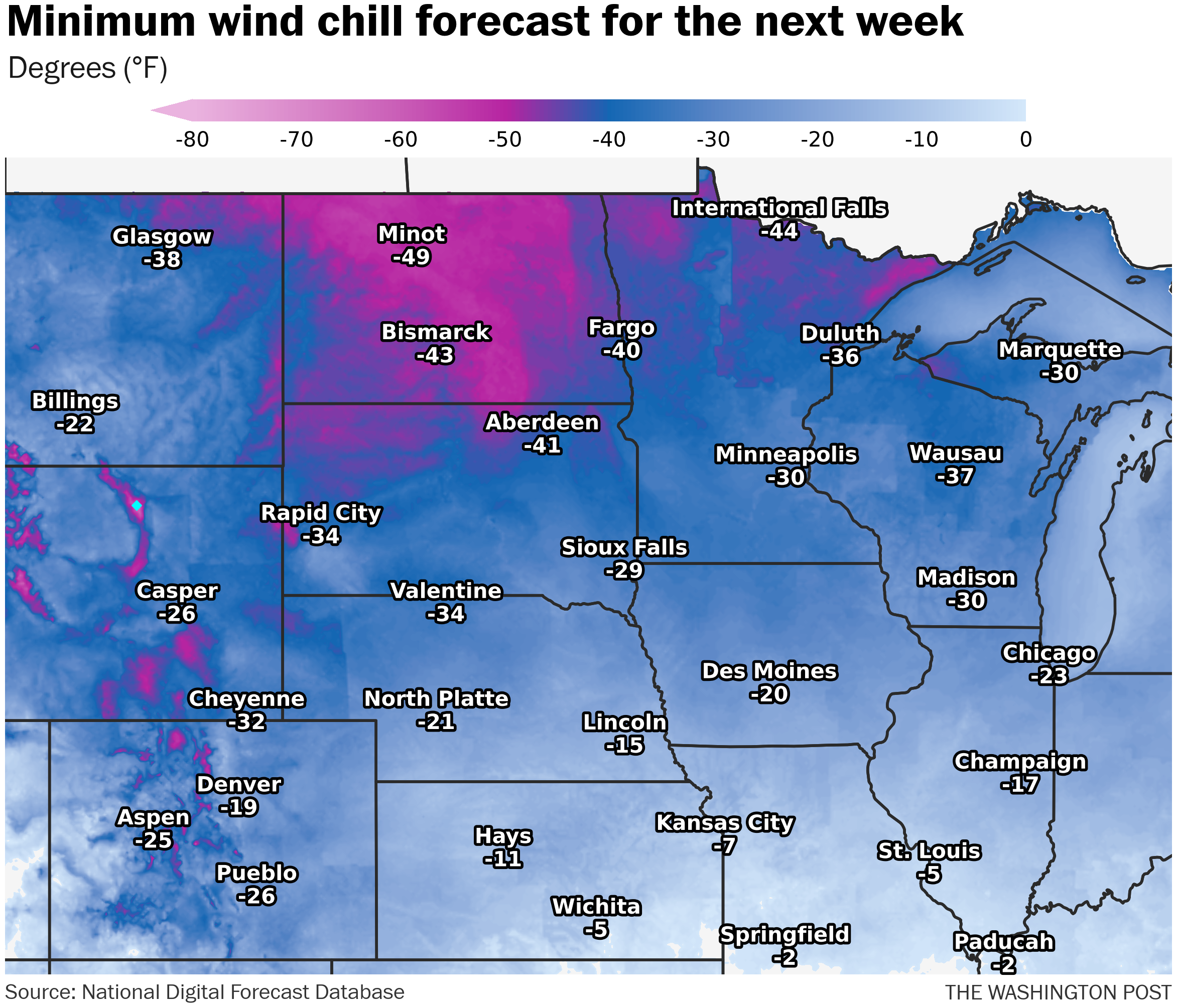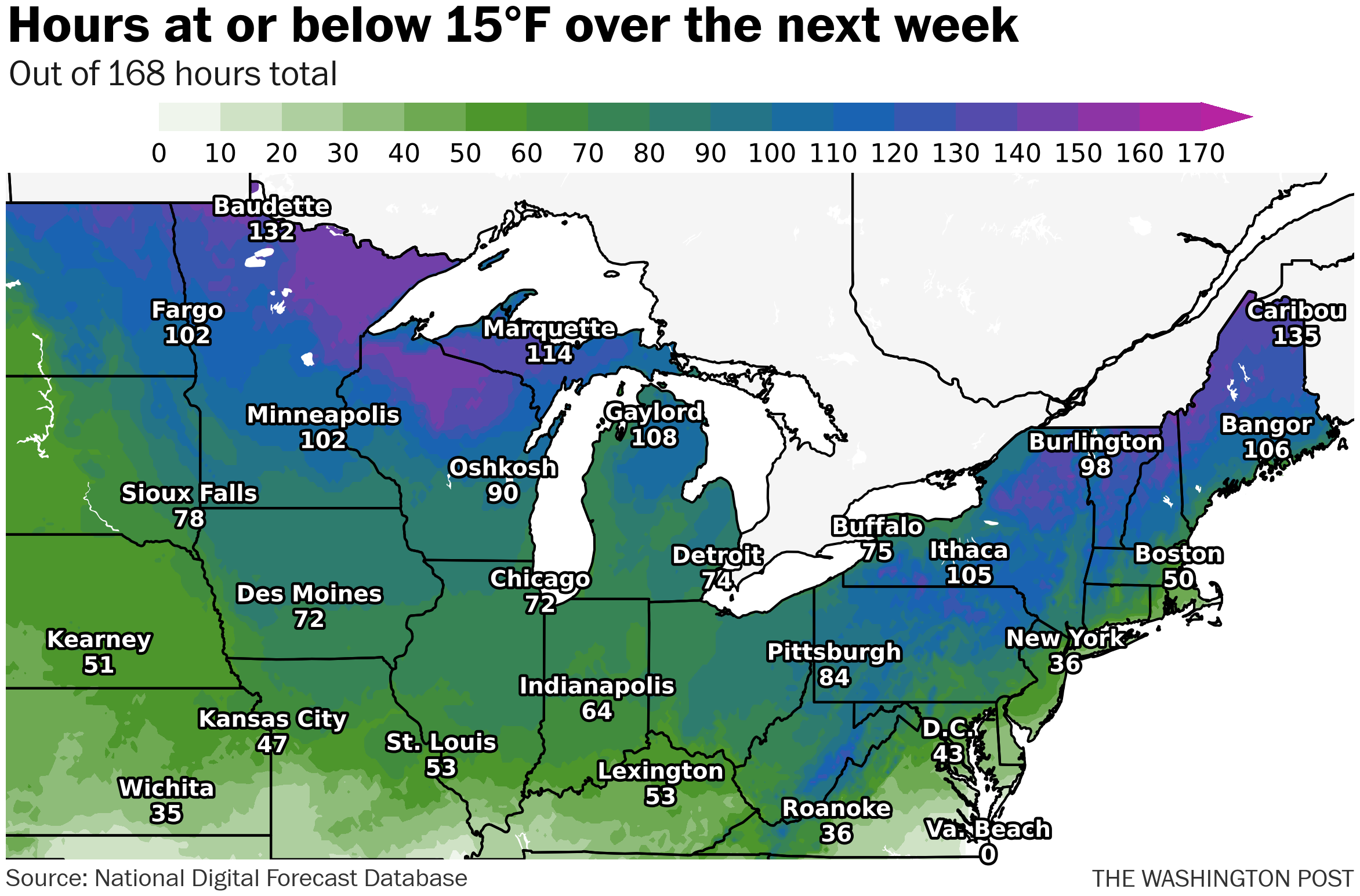Cold air associated with the winter season has moved into almost all of the eastern United States by Sunday and in many areas, the low temperatures pose a serious threat.
Weather alerts for cold weather are currently in place for approximately half of the U.S. population, affecting the northern Plains, Gulf Coast, the Rocky Mountains, and the Southeast.
Bitterly cold temperatures, dipping below freezing everywhere except in southern Florida, will be made even more unbearable by icy gusts. The hazardous combination of extreme cold and wind will heighten the risk of hypothermia and frostbite for people venturing outdoors, potentially causing frozen or burst pipes and disruptions to the power grid. The core of this Arctic blast will continue until the middle of the week.
Alerts for cold widespread
Around 150 million individuals are experiencing weather alerts issued by the National Weather Service for extremely cold conditions. Currently, 16 states have extreme cold warnings in effect, six are under an extreme cold watch, and a total of 33 states are under a cold weather advisory stretching from the northern Plains to the Gulf of Mexico and along the East Coast.

Widespread extreme cold warnings have been issued for a vast section of the northern Midwest and Plains regions, as well as parts of eastern Georgia, around the Atlanta area, and for high-elevation areas in the Appalachian Mountains.
“Being exposed to cold temperatures poses a life-threatening risk of hypothermia and frostbite to exposed skin.”
The route runs through the southeastern United States from western North Carolina, extending all the way to New England.
Temperature readings that drop to zero – and in some cases, well below zero – are expected to cover large areas of the northern half of the continental United States as the severe winter storm is at its strongest.

Temperatures dropped to as low as minus 30 degrees in a few areas.
Here are a list of cities with their forecasted lowest temperatures over the next few days:
early in the week.
It’s not the strongest cold snap on record – wind gusts are expected to stay in the moderate range, topping out at around 20-35 miles per hour. However, considering widespread temperatures near or below freezing, it only takes a moderate wind to make it extremely cold and hazardous to spend time outside.

Much of North Dakota will likely experience temperatures similar to around -50°F when wind chill is considered on Sunday night and Monday, and parts of South Dakota, Wyoming, Minnesota, Wisconsin, and Michigan are expected to feel equally cold.
Wind chill forecasts are calling for teeth-chattering cold.
You’re aiming to reach a temperature of near minus 5.
Frostbites of 0 degrees or below will stretch as far south as Texas, Arkansas, the northern parts of Alabama and Georgia, and up towards the Appalachian region, reaching the DC area.
The lowest temperatures are expected to persist for a number of days. This is what the forecast shows for the total time that will be at or below 15 degrees Fahrenheit for the week ahead.

Many places accustomed to frigid weather are often most severely impacted by it. Spent time in temperatures below certain thresholds can greatly increase the dangers for anyone, especially those who are vulnerable.
.
Bitterly cold temperatures will dominate two to four days in North Dakota and outposts as far east as the western Great Lakes, plunging below zero throughout. As of Sunday, the area had already experienced approximately 10 to 25 hours of freezing temperatures since Friday, and more are ahead.
